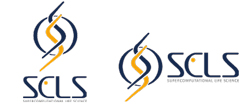Event Information
Announcement of the ISLiM International Symposium
■ |
4th Biosupercomputing Symposium |
● |
Date: |
December 3(Mon) -5 (Wed), 2012 |
● |
Location: |
Tokyo International Forum (Chiyoda-ku, Tokyo) |
● |
Conference fee: |
Free (get-together fee is charged.) |
■ |
Academic-Industrial Collaboration in the Supercomputer |
● |
Conference fee: |
Free |
Third Seminar |
● Date: |
December 19 (Wed), 2012, 13:00 - 17:00 |
|
● Location: |
Umeda Center Building (Kita-ku, Osaka) |
Fourth Seminar |
● Date: |
January 25 (Fri), 2013, 13:00 - 17:00 |
|
● Location: |
Fukuracia Tokyo-Station (Chiyoda-ku, Tokyo) |
News
The logo design for Field 1 was completed

Logo design concept
The monogram combining the two letters of “S” in the motif of the double-helical structure of DNA symbolizes the life sciences, and a circle behind the monogram symbolizes the “cell = life” and “circle = harmony and coordination (cooperation)”. Navy blue which is the color suggestive of intelligence represents supercomputers, and orange which is the color suggestive of upward mobility and liveliness represents life phenomena and life sciences. “SCLS” is an acronym for the theme of Field 1 “Supercomputational Life Science” and is pronounced as “esukurusu”.
Please also see the website of Field 1 (http://www.kobe.riken.jp/stpr1-life/outreach/pr/logo_stpr1.html)
■The Development and Use of the Next- Generation Supercomputer Project of the Ministry of Education, Culture, Sports, Scienceand Technology (MEXT).
Next-Generation Integrated Simulation of Living Matter

The “Next-Generation Integrated Simulation of Living Matter” is a project sponsored by the Ministry of Education, Culture, Sports, Science and Technology(MEXT), in which research and development of simulation software to understand various phenomena occurring in the biological systems, including molecules and the human body, have been undertaken to realize a petascale simulation by making full use of the performance of supercomputer “K computer”.
■Strategic Programs for Innovative Research Field 1
Supercomputational Life Science

SPIRE (Strategic Programs for Innovative Research) is a MEXT program aiming to produce ground-breaking results in computer science technology by maximizing the benefits of the HPCI (High Performance Computing Infrastructure) centered on the supercomputer “K computer”, and encouraging developments in five research fields that need to be strategically addressed.
"Supercomputational Life Science" has conducted research with the mission of understanding and predicting life phenomena based on large-scale simulation and advanced data analysis, and to apply these results to design and implement medicine and medical care with its research.

BioSupercomputing Newsletter Vol.7
- SPECIAL INTERVIEW
- Interview with “K computer” Developer regarding Efforts in Exascale and Coming Supercomputer Strategies
Executive Architect, Technical Computing Solutions Unit, Fujitsu Limited
Motoi Okuda - Large-scale Virtual Library Optimized for Practical Use and Further Expansion into K computer
Professor, Department of Chemical System Engineering,
School of Engineering, The University of Tokyo
Kimito Funatsu
- Report on Research
- Old and new subjects considered through calculations of the dielectric permittivity of water
Institute for Protein Research, Osaka University
Haruki Nakamura
(Molecular Scale WG) - Development of Fluid-structure Interaction Analysis Program for Large-scale Parallel Computation
Advanced Center for Computing and Communication, RIKEN
Kazuyasu Sugiyama
(Organ and Body Scale WG) - SiGN : Large-Scale Gene Network Estimation Software with a Supercomputer
Graduate School of Information Science and Technology,
The University of Tokyo
Yoshinori Tamada
(Data Analysis Fusion WG) - ISLiM research and development source codes to open to the public
Computational Science Research Program, RIKEN
Eietsu Tamura
- SPECIAL INTERVIEW
- Understanding Biomolecular Dynamics under Cellular-Environments by Large-Scale Simulation using the “K computer”
Chief Scientist, Theoretical Molecular Science Laboratory,
RIKEN Advanced Science Institute
Yuji Sugita
(Theme1 GL) - Innovative molecular dynamics drug design by taking advantage of
excellent Japanese computer technology
Professor, Research Center for Advanced Science and Technology,
The University of Tokyo
Hideaki Fujitani
(Theme2 GL)
- Report
- Lecture on Computational Life Sciences for New undergraduate Students
HPCI Program for Computational Life Sciences, RIKEN
Chisa Kamada
